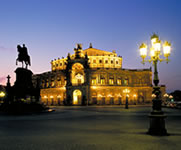Other highlights
Contact
Lübeck und Travemünde Marketing GmbH
Holstentorplatz 1
23552 Lübeck
Email:
pauschalen@luebeck-tourismu...
Internet:
www.luebeck-tourism.de
Holstentorplatz 1
23552 Lübeck
Email:
pauschalen@luebeck-tourismu...
Internet:
www.luebeck-tourism.de
Places of interest

This massive, 15th-century fortification with its twin towers is Lübeck's famous landmark. It is a reminder not only of the military strength of the “queen of the Hanseatic League” but also of her self-assurance. Its permanent exhibition in the Museum of City History is devoted to Lübeck merchant life in the late Middle Ages and early modern period.
This triple-naved basilica is a distinctive and hugely impressive brick building. With a central nave almost 40 metres in height and two towers rising to 125 metres, it is the third-largest church in Germany and the highest brick vaulted construction in the world. St. Mary's Church was the first example of Gothic-style architecture using local brick instead of natural stone, and it became a model for numerous Gothic brick churches all over the Baltic region.
The Buddenbrooks House at Mengstrasse 4 opposite St. Mary's Church owes its fame to Thomas Mann's novel “Die Buddenbrooks”. Behind the historical façade is the modern Heinrich and Thomas Mann Centre - the natural location for experiencing the life and work of the two Mann brothers. The permanent exhibition on the ground floor illustrates the relationship between Thomas and Heinrich Mann and their associations with their home town of Lübeck. Special exhibitions, seminars, film and video screenings and readings take place on the upper and lower ground floors.
Travel Planner
Select an option...



